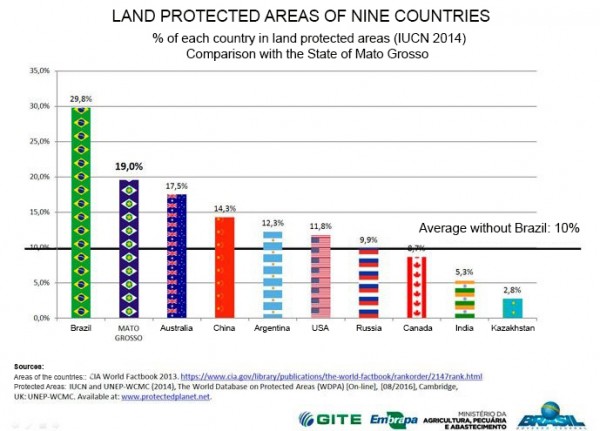Brazil, global leader in tropical agriculture, is a world reference in innovation, in research and in the adoption of technologies in the field. In this sense, Brazil has shown to the world that it is possible to conciliate economic growth with environmental conservation. Brazilian agricultural production expansion was based on increasing productivity, which means that agricultural practices and technology used privilege a more rational use of resources.
In face of this reality, the knowledge developed in the Brazilian territory is essential to preserve the environment and manage land problems. And especially when dealing with the supply chain of large crops, such as coffee, territory management is even more important. In 2012, the New Forestry Code was approved and brought with it the Environmental Rural Registry (CAR), recognized as a fundamental instrument to provide such information.
Therefore, Brazil is prepared to complete its map, not only the agricultural map, but also its social-economic and environmental maps. All registries joint together, prepared by farmers themselves in statements, have allowed the production of a complete report of the use and occupation of land in Brazil.
In this sphere, from a practical territorial viewpoint, CAR allows managing the supply chain and is a reliable source for buyers regarding traceability, since with it; they can understand the properties location and what is happening within their limits.
In September 2016, Cecafe had listed challenges and realizations resulting from the approval of the New Forestry Code. In addition to being a legal obligation, the adoption of the provisions provided in the Code contributed to give access to important information. According to data from the Brazilian Forestry Service, until January 31 2017, 3.95 million properties were registered, totaling over 400 million hectares.
CAR data was also integrated to the Strategic Territorial Intelligence System (Site) of the Brazilian Agricultural Research Corporation (Embrapa). The correlation between CAR’s technical information, such as properties geo-codification by satellite and the exploitation maps of the site divided by area types – permanent preservation, legal reserves, social interest, public interest, among other categories – confirmed the importance of agriculture and livestock activities for environmental preservation, through data objectivity.
The conclusion is that Brazil has almost 30% of its territory in protected areas, which is the sum of the conservation units and the native Indians’ lands.
Protected Areas*: Preservation units + native Indians’ land
Specific data are still being calculated, but according to Embrapa, it is already known that rural farmers maintain 21.3% of the Cerrado biome and 12.4% of the Atlantic Forest. In the state of São Paulo, which has been practicing agriculture for a longer period of time, the preserved areas correspond to 22% of the agricultural lands.

The state of Mato Grosso alone has 19% of the protected areas, a larger representation that whole Australia. Furthermore, 29.4% of the state is preserved as a result of legal reserves and permanent preservation areas (APPs) in rural properties. If the exceeding vegetation and lake and marsh areas are also taken into consideration, the percentage increases to 36%. The sum of all preserved and protected areas represent 55.2% of the state, and 63.3% of the rural and attributed areas.
Agricultural production can be considered the activity of more economic importance for Brazil and the backbone for its development. When adhering to the Forestry Code, farmers comply with their legal obligation and adopt good agricultural practices, preserving native vegetation areas and consequently maintaining the ecological balance. Hence Brazil is able to preserve its environmental and agro-economic assets.
In addition to CAR, the Code also brought the Environmental Adjustment Program (PRA), in different stages of regulation in the Brazilian states. According to data published by SiCAR (Registration Rural System), approximately 1.6 million properties adhered to the program, the purpose of which is to regulate the permanent preservation areas, of restricted use and legal reserves for those farmers that have environmental liabilities.
Cecafe, supported by its partners and together with the Coffee Global Platform, is developing the work of bringing knowledge to less privileged farmers through the Digital Coffee Farmer Program. In 2017, the industry will work for equity of gender, entrepreneurship and family succession in the farms, through actions aimed at young people and women. All the above initiatives should call place Brazil in a prominent place.
In this century, the low carbon economy is consolidating as the base for sustainable development in the entire world, and Brazil has the necessary requirements to perform its role with protagonism within this new economic model.
Marcos Matos – General Manager – CECAFE
Marjorie Miranda – Coordinator of Social Responsibility and Sustainability Projects – CECAFE


Leave A Comment